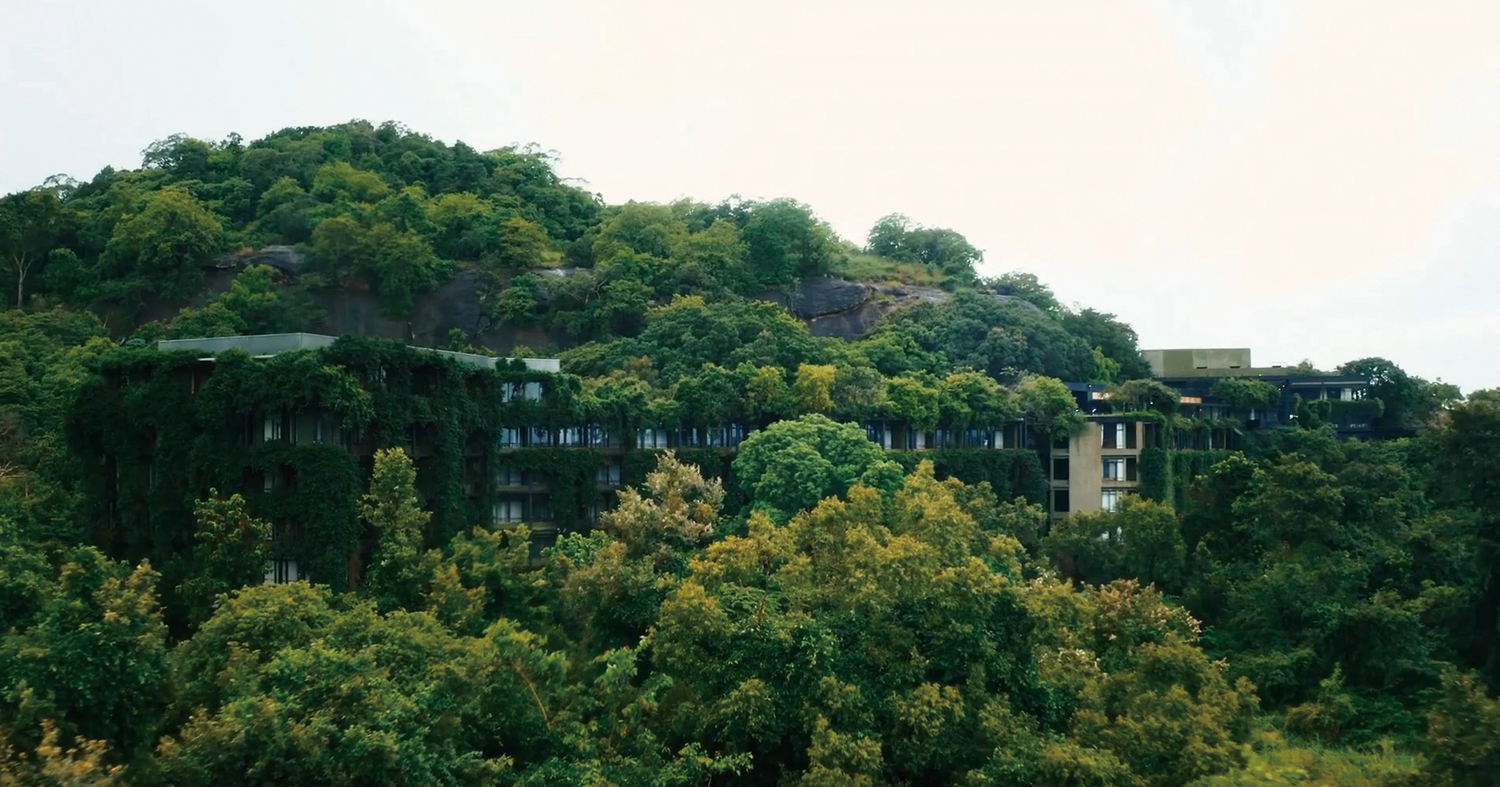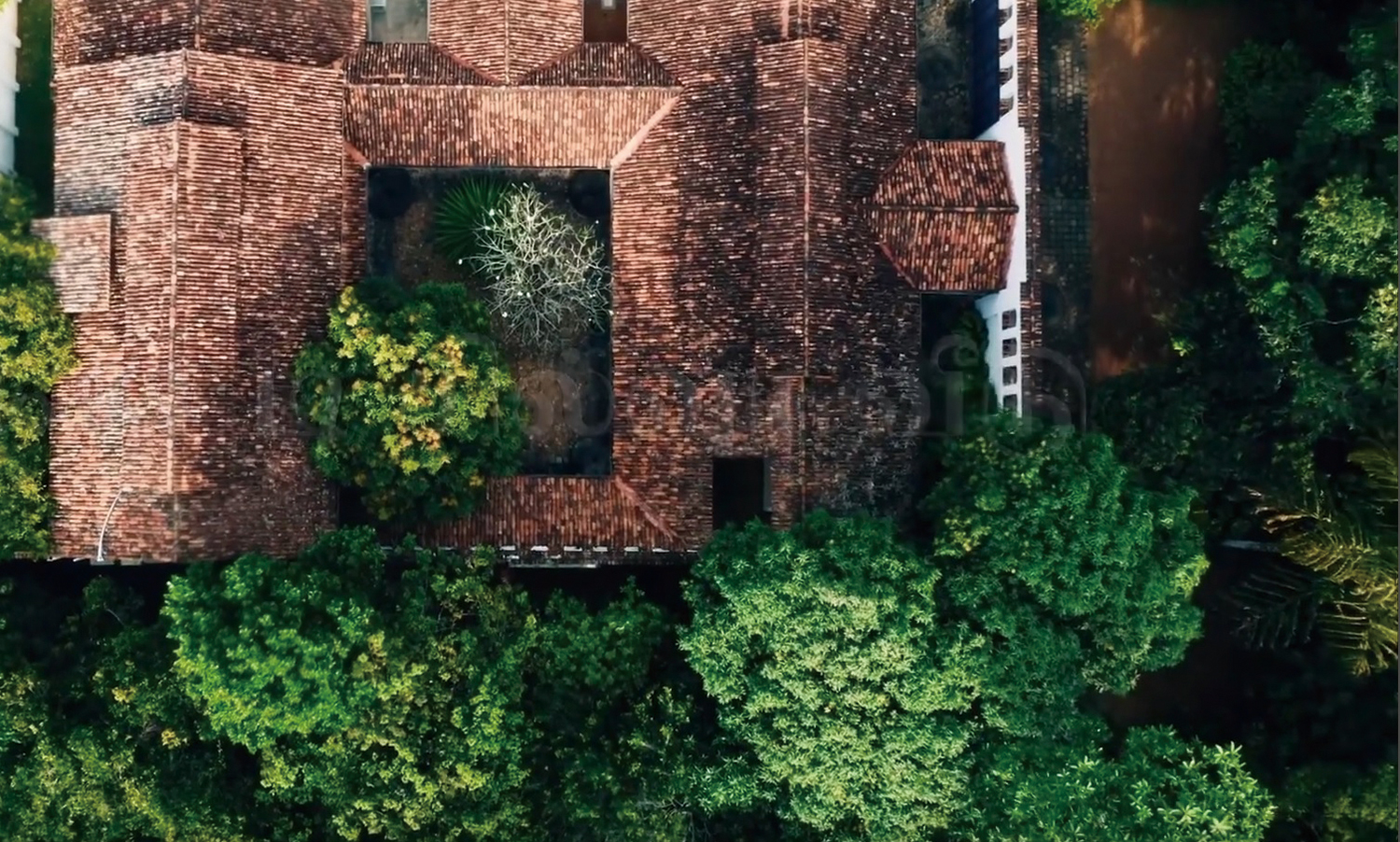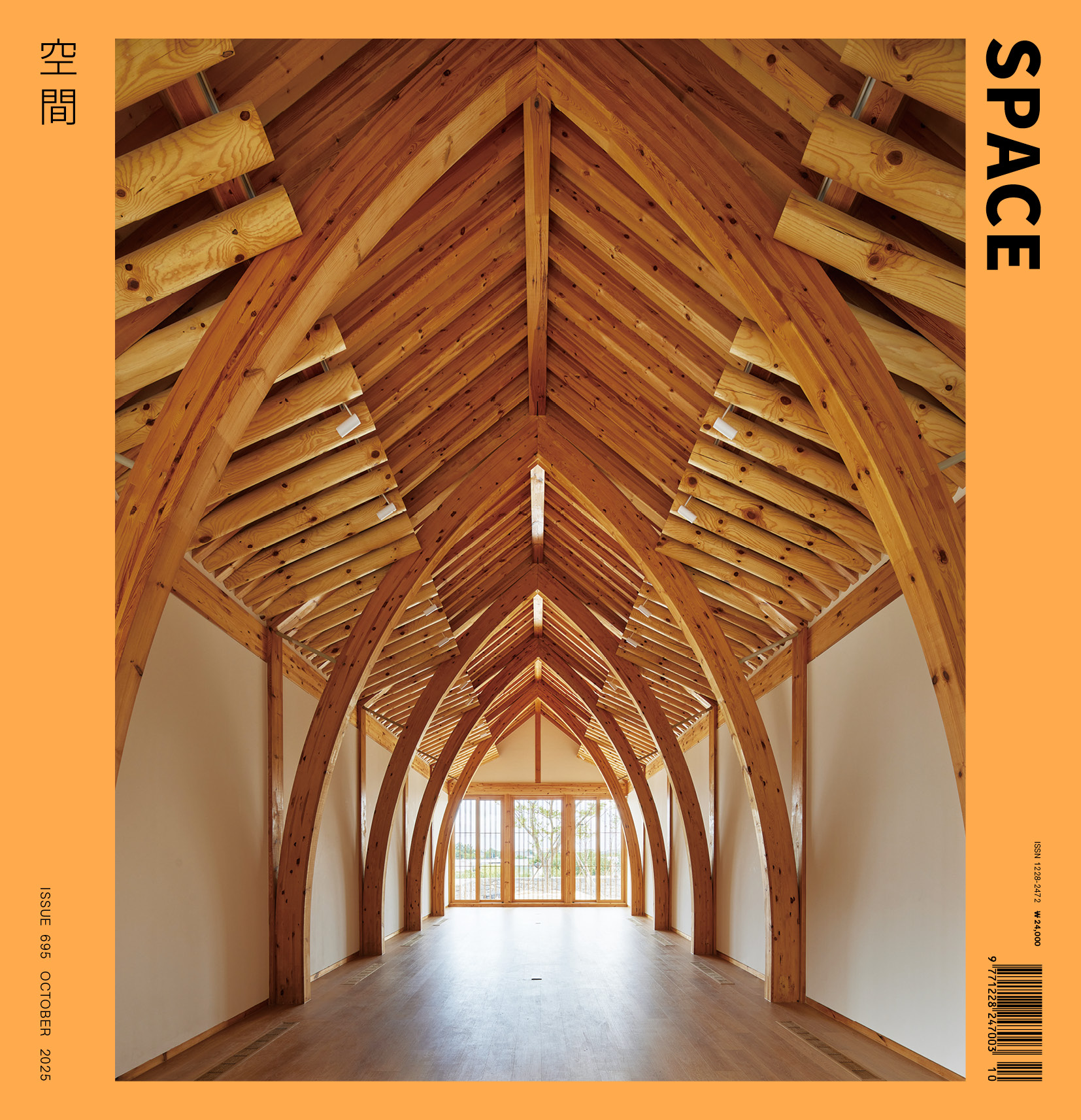SPACE October 2025 (No. 695)

Screenshot from NAVER TV

Still images of The Genius of the Place (2023) — Kandalama (top), Ena De Silva House (bottom). Screenshot from NAVER TV
The 17th Seoul International Achitecture Film Festival (SIAFF), the only architecture film festival in Asia, was held between Sep. 12 – 25. This year’s SIAFF presented 33 films from 22 countries, with a special focus on Asian architecture. Under the theme ‘True Colors of Architecture’, the festival offered new perspectives on societal challenges, including the climate crisis, community, locality, and publicness. The opening film, The Genius of the Place (2023), is a documentary highlighting the life and works of Geoffrey Bawa (1919 – 2003), Sri Lanka’s most renowned architect.
It introduces five of his representative projects, illustrating how his architecture is interwoven with the lives of Sri Lankans and what meaning this holds. Beginning in the early 1960s, Bawa pioneered Tropical Modernism by integrating pitched roofs, colonnades, and courtyards within modernist architecture suited to the local climate, while making active use of regional materials. He also extended architecture into an artistic realm through collaborations with painter and sculptor Laki Senanayake, textile pioneer Barbara Sansoni, and batik artist Ena De Silva. At the same time, Bawa was an early pioneer of sustainable architecture in the 20th century. The film traces this architectural journey through key projects: the Ena De Silva House (1962), one of his early works in which he first experimented; the LightHouse (1997), a hotel designed in collaboration with contemporary artists to create immersive spatial experiences; the Kandalama (1994), a hotel which brought nature into architecture and blurred the boundaries between interior and exterior; the Red Cliffs (1998), a residence without walls, doors, or windows to embody pure architectural form like a pavilion; and Lunuganga (1948 – 2003), his lifelong residence and garden project that served as a living laboratory for his architectural experiments. These works reveal Bawa’s architectural world, which embodied the spirit of place.
What is remarkable is that, despite conflicts at the time with environmental and religious groups, the Kandalama became the first building in the world to receive LEED certification, the international standard for eco-friendly architecture. Located on a rock overlooking Lake Kandalama, the hotel was raised on massive pillars so that water could flow freely from the mountains into the lake. Drawing water from wells on the site, the hotel purified and recycled wastewater before returning the surplus to the Kandalama aquifer, allowing for a self-sufficient water supply and wastewater treatment without reliance on external facilities. The massive rock on which the building stands also functions as a natural cooling system for the entire building, reducing the need for air conditioning. Some critics dismissed it as resembling a barracks or an apartment block in the jungle at its completion. However, Bawa knew that the passage of time would transform the building itself. What he envisioned was architecture that could endure the vagaries of the time, like the remnants of ancient civilisations. Today, the Kandalama has been transformed into a stage for nature, with its entire façade now covered in trees and vines. Bawa once remarked, ‘The day this hotel is complete will be when a leopard roams its corridors and a bear resides in its rooms.’
Building in untouched nature, or carving into a hillside, as in the case of Lunuganga, to make a panoramic view, can be controversial if considered only through the lens of site intervention. However, Bawa’s architecture offeres insights beyond aesthetic value. He recognised the potential of place, minimised the impact on nature, and incorporated elements into architecture to create a sense of harmony. Bawa imagined a time, a century or two into the future, when the boundaries between his architecture and nature would disappear. And so, the question remains: what kind of future architecture can we imagine today?





